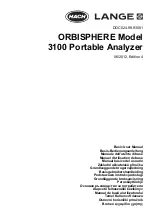
App-4
IM WT310E-01EN
Measurement Functions Used in Harmonic Measurement (Option)
I
r
(k)
2
+
I
j
(k)
2
I(k) =
Voltage U( ) [V]
Current I( ) [A]
Active power P( ) [W]
P(k) =
U
r
(k)
•
I
r
(k) +
U
j
(k)
•
I
j
(k)
Power factor λ ( )
Phase difference
Φ
U(
) [°]
Phase difference
Φ
I(
) [°]
P(1)
S(1)
λ
(1) =
Measurement Function
Methods of Computation and Determination
(Table 1/2)
U
r
(k)
2
+
U
j
(k)
2
U(k) =
U(k)
2
k = 1
max
U =
I(k)
2
k = 1
max
I =
P(k)
k = 1
max
P
=
ΦU(k) = The phase difference
between U(k) and U(1)
ΦI(k) = The phase difference
between I(k) and I(1)
Rms value of
all components
(Total value)
2 to max
(harmonics)
Harmonic order
1
(fundamental wave)
—
—
—
—
Fundamental frequency of the voltage or current set as the PLL source
Phase difference
between I(1) and U(1)
Same as above
(Continued on next page)
PLL source frequency
fU, fI [Hz]
Note
• k denotes a harmonic order, r denotes the real part, and j denotes the imaginary part.
• U(k), Ur(k), Uj(k), I(k), Ir(k), and Ij(k) are expressed using rms values.
• The upper limit of measured harmonic order is denoted by max. max is either an automatically determined
value or the specified maximum measured harmonic order, whichever is smaller.
• Harmonic measurement functions are measured only for input elements, not Σ functions.
Appendix 1 Symbols and Determination of Measurement Functions
















































